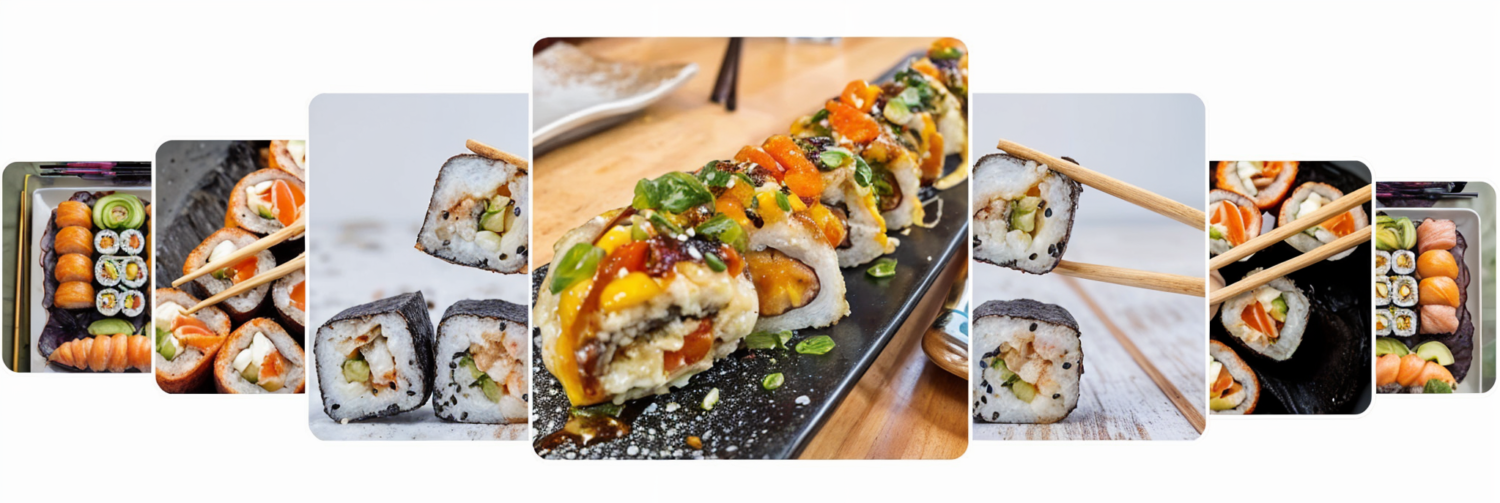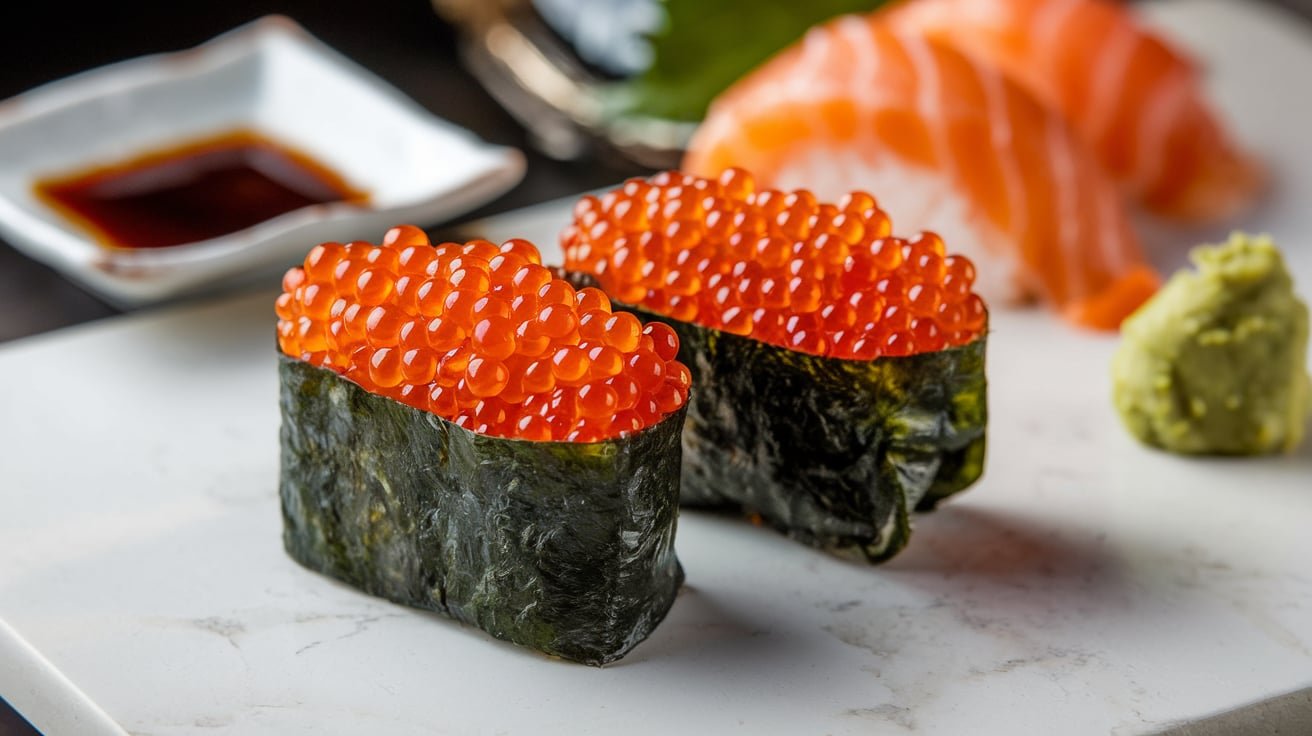Fish eggs, also known as roe, are essential ingredients in sushi, offering unique flavors, textures, and vibrant colors. Whether you’re a sushi enthusiast or a curious beginner, understanding the different types of roe can enhance your appreciation of this culinary art. From the crunch of tobiko to the creamy indulgence of uni, let’s explore the nine types of fish eggs commonly used in sushi.
Table of Contents
ToggleWhat fish eggs are used on sushi?
Are you familiar with tobiko and masago? How about ikura and uni? By the time you finish reading about these nine popular fish eggs used in sushi, you’ll be a pro!
1.Tobiko (とびこ):
Tobiko comes from flying fish and is one of the most popular types of roe in sushi. These tiny eggs, measuring just 0.5–0.8 mm, are known for their vibrant red-orange color and crunchy texture. Their salty, smoky flavor makes them a perfect garnish for sushi rolls or a coating for tobiko rolls. Tobiko adds a delightful crunch and a pop of color to sushi dishes.
2.Ikura (イクラ):
Ikura, or salmon roe, stands out with its large, glossy orange eggs. These soft, gooey spheres burst with salty-sweet flavors. Unlike tobiko and masago, ikura is used for its rich texture rather than crunch. It’s often served on top of sushi rice or wrapped in nori, making it a showstopper in sushi presentations.
3.Caviar(キャビア)
Caviar is a luxurious option for sushi enthusiasts. It comes from various fish, including sturgeon and paddlefish, and is known for its black color and premium price. With its salty, refined flavor, caviar elevates high-end sushi dishes. You’ll often find it as a garnish on rice wrapped in nori for a sophisticated touch.
4.Sujiko(筋子)
Sujiko is salmon roe still encased in its egg sac. It offers the same salty, gooey flavor as ikura but with a more intense punch due to the membrane. Sujiko is often served on sushi rice, making for a bold and flavorful bite that balances perfectly with the rice’s stickiness.
5.Masago (マサゴ):
Masago is the roe of capelin fish, often found in the Pacific and Arctic Oceans. It’s smaller and softer than tobiko and has a pale yellow color that is often dyed for a more vibrant appearance. Masago has a mild flavor with slightly bitter undertones and is commonly used as a budget-friendly alternative to tobiko in sushi rolls.
6.Mentaiko
Mentaiko is tarako with a spicy twist. Marinated in chili and salt, it delivers a bold, spicy flavor with a rich umami taste. This roe is popular in sushi rice balls or wrapped in nori, offering a fiery kick for spice lovers. Mentaiko can be enjoyed raw or cooked, making it a versatile sushi ingredient.
7. Tarako ( 鱈子 )
Tarako is the salted roe of cod or pollock, encased in a thin membrane. Its tender texture and savory taste make it a versatile ingredient in sushi. Tarako is often used in sushi fillings rather than as a topping, adding a subtle salty flavor to complement the dish.
8. Kazunoko (数の子 )
Kazunoko, or herring roe, is a Japanese delicacy with a crunchy texture and a golden hue. Marinated in dashi soy sauce, it offers a savory umami flavor with subtle salty notes. Kazunoko is a traditional New Year’s dish in Japan, symbolizing good fortune and prosperity. It’s also a unique garnish for sushi rolls.
9. Uni (ウニ )
Uni, or sea urchin roe, is the most luxurious roe in sushi. Its creamy, custard-like texture and sweet, briny flavor make it a sought-after delicacy. Uni is typically served with rice and seaweed, allowing its rich, umami flavors to shine. It’s a favorite among sushi enthusiasts looking for a premium experience.

